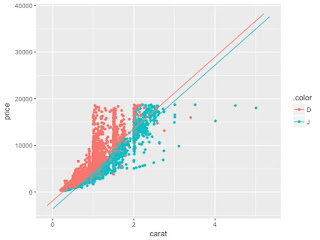ggformula: another option for teaching graphics in R to beginners
A previous entry (http://sas-and-r.blogspot.com/2017/07/options-for-teaching-r-to-beginners.html) describes an approach to teaching graphics in R that also “get[s] students doing powerful things quickly”, as David Robinson suggested. In this guest blog entry, Randall Pruim offers an alternative way based on a different formula interface. Here's Randall: For ...



